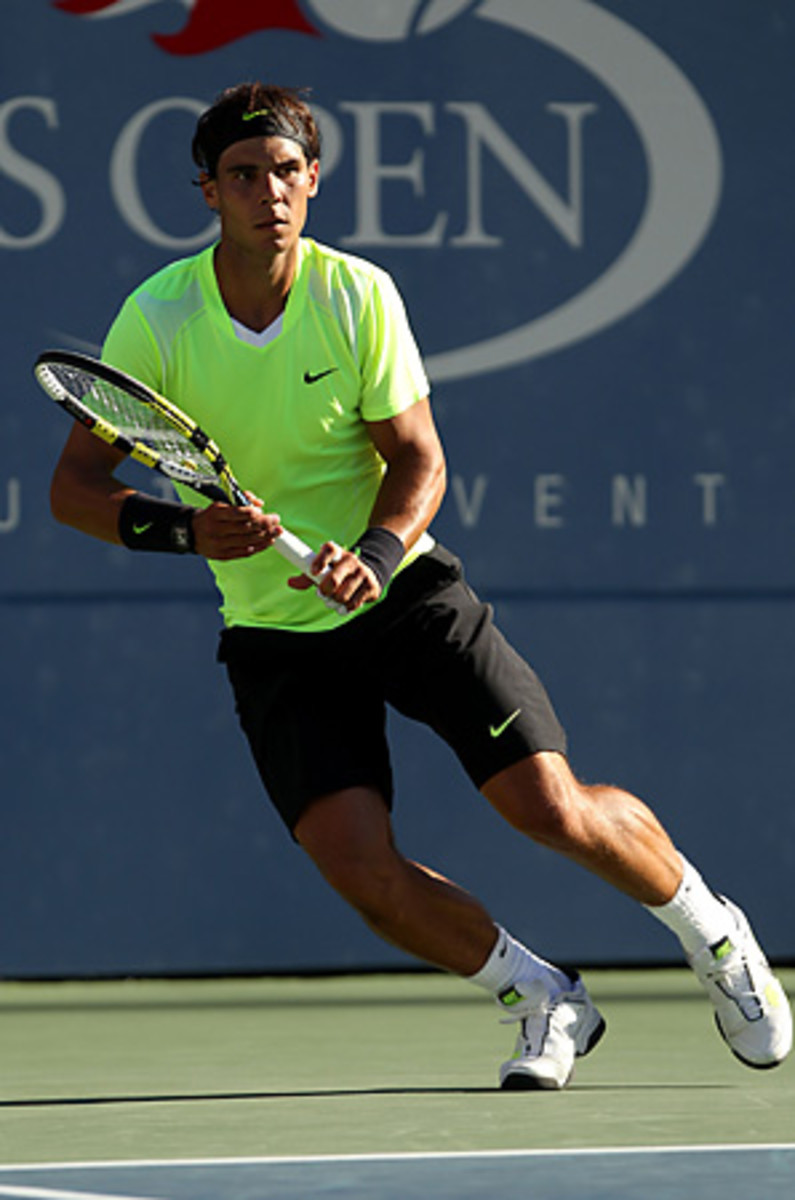
Broadcasters expand 3-D TV efforts
NEW YORK -- As Rafael Nadal smashed a forehand down the line and into his line of sight last weekend, Ken Aagaard, wearing 3-D glasses along with eight other colleagues inside a cramped CBS trailer behind Arthur Ashe Stadium, explained what made tennis one of his favorite sports to watch in 3-D.
"You can get the lower angles so you really feel the ball coming at you," said Aagaard, the executive vice president of operations and engineering for CBS Sports. "I've seen 3-D in every sport and tennis is probably one of the best."
Indeed, Nadal looked like a topspin-wielding avatar out of a video game (the match was shown on DirecTV's dedicated 3-D channel as well as Panasonic 3-D viewing gallery on site at the U.S. Open) and so defined were the visuals that you could actually make out the rotation of the ball. So visually sumptuous was the viewing that you can understand why television executives are excited about the possibilities.
"We're trying to be aggressive in 3-D," CBS Sports president Sean McManus said. "It's still very experimental and there's still a lot of discussion on how to cover it and how to get the technology in people's homes. We're trying to look for strategic partners to pay for the investment because unlike when high definition came in and transitioned pretty quickly to state of the art, 3-D is an entirely different setup. It's different cameras, different announcers, different graphics and a different production truck. The investment is pretty lofty."
CBS last week became the first network to broadcast the U.S. Open tennis championships in 3-D, another first in a year that has seen similar productions in baseball, football, basketball, hockey, soccer and golf. Leading the technology charge is ESPN, which launched ESPN 3D in June with plans to air 85 live sporting events during its first year, including the 2011 BCS championship game. The unit has more than 150 engineers, technicians, camera operators and other staffers working on the initiative. (In March, SI.com's Andy Staples reported on ESPN's 3-D efforts).
At the moment, 3-D TVs come in a range of lengths from 40 to 65 inches and cost from $2,000 to $7,000. The active glasses go for between $50 to $150 and how viewers feel about wearing them at home likely holds the key to the amount of traction 3-D gets with sports fans.
CBS had 40 people specifically working on 3-D at the U.S. Open (it had 200 working on 2-D coverage), including a separate group of broadcasters. The coverage was exclusive to Arthur Ashe Stadium, and consisted of seven cameras. The challenges for tennis and every other sport include figuring out the proper camera positions. (Aagaard said CBS had moved various cameras during the Open.) But football remains the sport most fans care about in the U.S and the success of 3-D sports programming -- the technology is geared more for gaming and movies -- will likely be determined by how good the sport looks in the technology.
"I think football will be harder to produce in 3-D," Aagaard said. "Obviously, it's still a great sport, but we just have to find the positions."
For example, Aagaard explained that the high end-zone camera, used in 2-D to show the ball going through the goal post, does not work in 3-D.
"It's flat and you don't get the dimension," he said.
But Aagaard believes TV producers will figure out a way to make it work.
"I'll be following closely how ESPN does with its college games and I have every confidence they will figure better examples," he said.
So how many sports fans are currently watching? Not many. The New York Timesreported that 3-D television sales accounted for just 2.5 percent of the market in the United States in the last quarter, according to a survey by the market researcher iSuppli.
"I don't have any predictions on how prevalent it will be, or if in five years 50 percent of the people will be watching sports in 3-D," McManus said. "There are a lot of positives to it and we're still trying to work out the technology where for three hours the experience is good for the viewer. But when you look at some of the pictures -- especially the low angles we did it at the Final Four -- it really is mind-numbing to watch."





